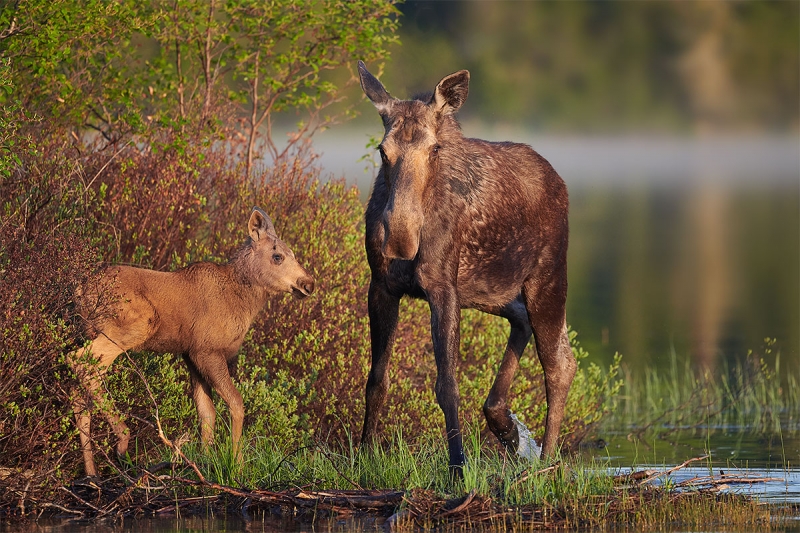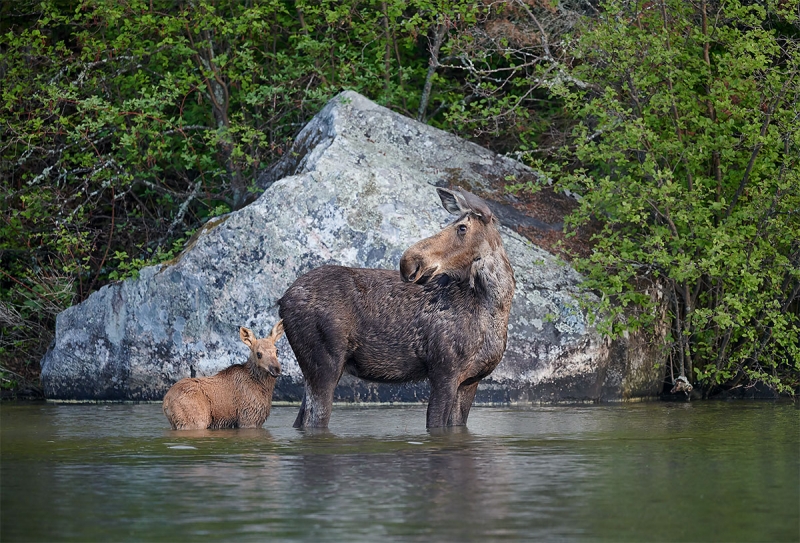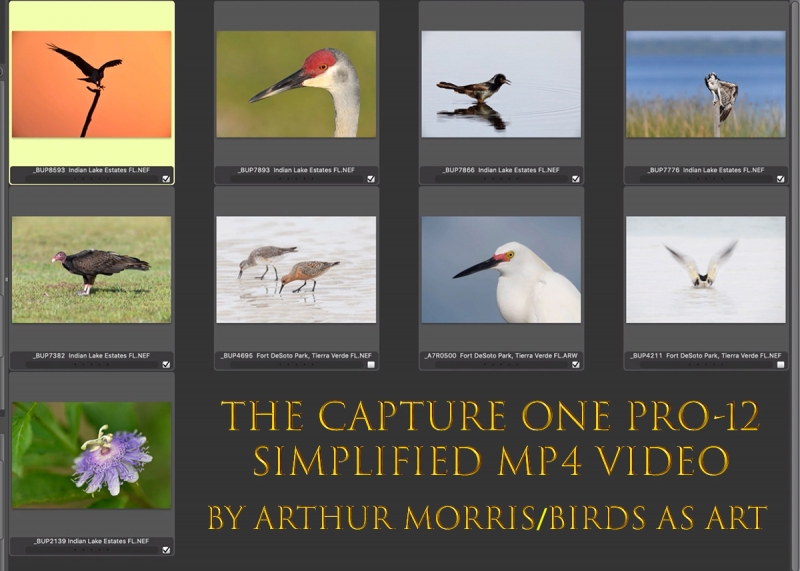What’s Up?
On Friday evening we limited out on Walleye. On Saturday morning we caught zero Walleye but did great with Northern Pike. I was thrilled with the 6-pounder that I landed on a blue and white Daredevil spoon. We spent an hour gently pursuing a pair of Common Mergansers and though we got within point-blank range, I doubt that I made a single keeper. With their dark greenish-black heads and gleaming white breasts, they are a very difficult avian subject.
On Saturday afternoon I enjoyed my first Walleye meal, deliciously prepared on the grill by Lorne Van Patter, Anita’s friend of more than 60 years. Lorne is also her right-hand man at Basket Lake. I am looking forward to lots more.
My Final Offer: Huge Late-registration UK Puffins, Gannets, and Red Kites Instructional Photo-Tour Discount Increased Again!
The late-registration discount has been increased to $4,000.00.
The New, Expanded 2019 UK Puffins and Gannets IPT. Seahouses, Bempton Cliffs, and the Dunbar, Scotland Gannet boat to Bass Rock! Thursday, June 27 (from EDI) through Tuesday, July 9, 2019 (on the ground; fly home on Wednesday, July 10.): $9,999. Limit 5 photographers/Openings: 1
In an effort to fill a single remaining slot, I have increased the the late-registration discount for this great IPT from $3,000.00 to $4000.00. Click here and scroll down a bit for complete details. Please e-mail for additional information.
BIRDS AS ART
BIRDS AS ART is registered in the U.S. Patent and Trademark Office.
Money Saving Reminder
If you need a hot photo item that is out of stock at B&H, would enjoy free overnight shipping, and would like a $50 discount on your first purchase, click here to order and enter the coupon code BIRDSASART at checkout. If you are looking to strike a deal on Canon or Nikon gear (including the big telephotos) or on a multiple item order, contact Steve Elkins via e-mail or on his cell at (479) 381-2592 (Eastern time) and be sure to mention your BIRDSASART coupon code and use it for your online order. Steve currently has several D850s in stock along with a Nikon 600mm f/4 VR. He is taking pre-orders for the new Nikon 500 P and the Nikon Z6 mirrorless camera body.
Gear Questions and Advice
Too many folks attending BAA IPTs and dozens of photographers whom I see in the field and on BPN, are–out of ignorance–using the wrong gear especially when it comes to tripods and more especially, tripod heads… Please know that I am always glad to answer your gear questions via e-mail. Those questions might deal with systems, camera bodies, accessories, and/or lens choices and decisions.
|
|
|
This image was created on June 7, 2019 from a small fishing boat on a lake near Dryden in northern Ontario, CA. I used the hand held Nikon AF-S NIKKOR 500mm f/5.6E PF ED VR lens and my souped-up Nikon D850. Auto ISO: 800. Matrix metering as framed at zero: 1/800 sec. at f/5.6 in Shutter Priority mode (S with Nikon, TV with Canon). AUTO1 WB at 6:50am on a relatively clear morning with some light clouds on the eastern horizon. Nikon Focus Peaking fine-tune value: +4. See the Nikon AF Fine-tune e-Guide here. Two up and two to the left of center D-9 Continuous (C in Nikon/AI Servo with Canon) AF was active at the moment of exposure. The selected point was on the shaded right flank of the cow about 1/2 way down the snout. Image #1: Moose cow with calfClick on the image to enjoy a large version. |
First Morning Mooses Miracle …
Anita North has been visiting Basket Lake for more than 60 years. Her Dad, Eric North, was a logging bush camp foreman and a Moose Whisperer. On her visit, when she was only six years old, her Dad, using only his own voice, called in several bulls and cows. She has been in awe of these amazingly huge majestic animals ever since. A very rustic Basket Lake Camp was opened by Anita’s parents in 1962. For decades Moose were a common sight in the bays of the lake where they fed on aquatic vegetation. Breeding success was excellent. Anita visited every year during her 25-year career as a neurosurgeon. On her 2010 visit, she saw zero Moose. When the same thing happened in 2011 she became alarmed and contacted the Minister of Natural Resources. “Don’t worry, it is a natural fluctuation.” By 2014 when the problem became too obvious to be ignored, the government reduced the number of Moose tags allotted to hunters. The Moose calf-kill continued unabated and today, hunters are still allowed to shoot the calves despite the precipitous declines. Additional factors in these declining populations include global warming, habitat destruction, parasites & ticks, illegal hunting (poaching), chemical spraying by the forest industry, increased predation by bears and wolves that use newly-created logging roads to get around, higher powered rifles and better scopes, and electronic Moose calls among many others. In 2014, 3621 adult Moose and 1,429 calves were legally shot and killed by hunters in Ontario …
Since Anita began photographing nature about five years ago, she had seen a grand total of two Moose (and one calf) on the lake despite having spent most of each summer at Basket Lake for the past decade. As the Moose at Basket Lake are exceedingly shy, Anita had never enjoyed a single good photographic opportunity. She began working tirelessly on Moose conservation in 2016 when she set up the North Wildlife Foundation. In 2017 she teamed up with the Wildland Chapter of CPAWS (Canadian Parks and Wildlife Society), to set up The Moose Project while backing up her words with sizeable donations. Her efforts have been primarily directed at eliminating the hunting of Moose calves. To protect Moose habitat, she has been working with the two major logging companies to limit road access into clearcut wilderness areas. She feels that if somebody doesn’t do something major soon, the Moose populations in northern Ontario will suffer the same fate as the next-to-nothing Moose populations in the US midwest. In the past twenty years, Area 5, which encompasses Basket Lake, has gone from having the most Moose in the province to having the fewest Moose in the province.
On my first morning at Basket Lake, we approached Weedy Point to fish for Walleye. I saw the back of a very large animal above the brush and said to Anita “I think that I saw a Moose.” She later admitted thinking, “He was a large tree stump. What the heck would a guy from Brooklyn know about Moose?” Five minutes later while concentrating on fishing, I heard Anita’s D-850 going off. I looked up to see the mom and calf in today’s two featured images. We wound up spending more than 20 minutes photographing mom with her month-old calf.
It is easy to understand why Anita cried tears of joy when the momma Moose finally led her calf into the woods.
|
|
|
This image was also created on June 7, 2019 from a small fishing boat on a lake near Dryden in northern Ontario, CA. I used the hand held Nikon AF-S NIKKOR 500mm f/5.6E PF ED VR lens and my souped-up Nikon D850. Auto ISO: 2200. Matrix metering as framed +1/3 stop: 1/500 sec. at f/5.6 in Shutter Priority mode (S with Nikon, TV with Canon). AUTO1 WB at 7:01am on a then cloudy morning. Nikon Focus Peaking fine-tune value: +4. See the Nikon AF Fine-tune e-Guide here. Two up and two to the left of center D-9 Continuous (C in Nikon/AI Servo with Canon) AF was active at the moment of exposure. The selected point was on the shaded right flank of the cow about 1/2 way down the snout. Image #2: Moose cow with calfClick on the image to enjoy a large version. |
The Stronger Image?
Which of today’s featured images do you feel is the stronger of the two? Please let us know why you made your choice. Feel free to comment on the image design, the quality and the direction of the light, the background, and anything else that floats your boat.
|
|
The Capture One Pro-12 Simplified Video
|
The Capture One Pro-12 Simplified Video
$15.00 via electronic download
As with all of my images for the past three months or so, both of today’s images were optimized beautifully and quickly in Capture One Pro 12. When I first heard about doing RAW conversions in C-1 Pro 12, I purchased the somewhat pricey program and tried to figure it out on my own. I was totally lost. So I did some reading online and was still very confused. Then I consulted Arash Hazeghi’s comprehenisve The Nikon Photographers’ Guide to Phase One Capture One Pro e-Guide and while Arash does a great job of covering the fine points, I still had some difficulty getting started. I thought Who needs Sessions and who wants to have to Import images? So I consulted Patrick Sparkman, the BAA technical advisor. Patrick had been using C-1 Pro 12 for a while. We spent a good deal of time on FaceTime simplifying things. That video is a direct result of those conversations.
You can purchase your copy in the BAA Online Store here.
If you are new to Capture One Pro-12, please click here to order. Understand that C-1 Pro 12 is expensive for good reason … Are your photos worth it?
Here are some of the things you will learn in this 33+ minute video as we convert nine different RAW files (eight Nikon and one SONY) from soup to nuts, from Photo Mechanic through the RAW conversion in Capture One to Photoshop:
- 1-How to quickly and easily find your images while working in a simple file folder format.
- 2-How to customize your Exposure and Details tabs to streamline your workflow.
- 3-How to set the White and Black points using Levels.
- 4-How to adjust set the values for the relevant sliders including Exposure, White Balance, High Dynamic Range (the Highlight and Shadow sliders), and Clarity and Structure.
- 5-How to work at 100 or 200% and fine tune your settings for Noise Reduction and Sharpness.
- 6-How to work with the Color Editor
If you are trying to get a handle on how to use this great RAW conversion engine for your Nikon and SONY images, this video is just what you have been looking for. It is meant to serve as an adjunct to Arash’s comprehensive The Nikon Photographers’ Guide to Phase One Capture One Pro e-Guide. For Canon shooters, Arash and I both recommend using DPP 4.
If In Doubt …
If in doubt about using the BAA B&H affiliate link correctly, you can always start your search by clicking here. Please note that the tracking is invisible. Web orders only. Please, however, remember to shoot me your receipt via e-mail.




Please Remember to use my Affiliate Links and to Visit the New BAA Online Store 🙂
To show your appreciation for my continuing efforts here, we ask, as always, that you get in the habit of using my B&H affiliate links on the right side of the blog for all of your photo and electronics purchases. Please check the availability of all photographic accessories in the New BIRDS AS ART Online Store, especially the Mongoose M3.6 tripod head, Wimberley lens plates, Delkin flash cards and accessories, and LensCoat stuff.
As always, we sell only what I have used, have tested, and can depend on. We will not sell you junk. We know what you need to make creating great images easy and fun. And please remember that I am always glad to answer your gear questions via e-mail.
I would, of course, appreciate your using our B&H affiliate links for all of your major gear, video, and electronic purchases. For the photographic stuff mentioned in the paragraph above, and for everything else in the new store, we, meaning BAA, would of course greatly appreciate your business. Here is a huge thank you to the many who have been using our links on a regular basis and those who will be visiting the New BIRDS AS ART Online Store as well.
Be sure to like and follow BAA on Facebook by clicking on the logo link upper right.
Typos
In all blog posts and Bulletins, feel free to e-mail or to leave a comment regarding any typos or errors. Just be right :).


















Love the moose story and pics! And I had no idea Anita has a wildlife conservation fund. She’s awesome. Sounds like you are having fun!
Love you Lissy-lou 🙂
Daddy-O
I like the second photo better for the pose and composition, although the color cast is rather bluish — I prefer the warmer tones of the first picture.
Sun and no sun …
with love, a
Number 2 is my favorite. This is a different type of wildlife image from what you normally photograph. You may get hooked on this as well as birds. Have a safe trip. FYI, nothing beats fresh fish.
We have had generations of cow moose with one or two young bedding down in our yard in the past 20+ years as they made their rounds to willow patches. I have hundreds of pictures. Moose meat is a staple here in Fairbanks and many families depend on moose hunting for winter meat. The moose are abundant because they are well managed and young moose are protected. Why not there?
You are a lucky man. Stay warm. Why not there human stupidity and greed?
with love, a
Hi Artie: Both images are great, but I like image 2 a little bit better, due mostly to the framing by the rock and the alert posture of the mother. I was, however, momentarily taken aback in your comment on image 1, “…on a lake near Dryden in northern Ontario, CA.” Being raised in S. Calif, my first reaction was; moose in the hills 40 some miles east of Los Angeles, CA? Then my brain fluttered back to normal. 🙂
Tough call, Artie, but probably image 2 because of the way Mama is looking over her shoulder and the way the rock behind them frames to two meese. (I know….)
Did anyone try eating the pike?
Hey Arthur, I like image #2 the most of the two. The way the calf is tucked back in the brush. Also like the light and the overall setting. Im suprised to see you took a side light shot. The mom’s right side is in shadow with the left in sun. I know it’s hard to get the sun behind you with skittish mammals. Does the number of adult moose killed include bulls and cows? Nice to see some moose on here.
Like#2 better– profile on Mom is more pleasing, knee-deep water a plus (contrasting with shoulder for calf!), and the rock is a nice visual element. My first close-up experience with a Moose at Glacier National Park made me cry, too. It moved from small-in-the-frame across a pond in the evening sun, getting closer and closer, giving me fabulous and changing opportunities, until I realized I needed to get my eye out of the viewfinder and get some distance because it was coming out of the water right in front of me. Then she ran off into the woods, out of sight. A brilliant experience, for which I was just leaning on my tripod muttering, “thank you, thank you.”
I also like #2. The rock frames the animals and as it is lighter then they are, it makes them stand out more.
I’m also jealous!! Some great shots and great time with these animals.
Really like both but would pick #1. The lighting is really nice and the direct look from the mom adds interest to me.
There’s a danger and innocence about #2. Plus the triangular rock background is fantastic.